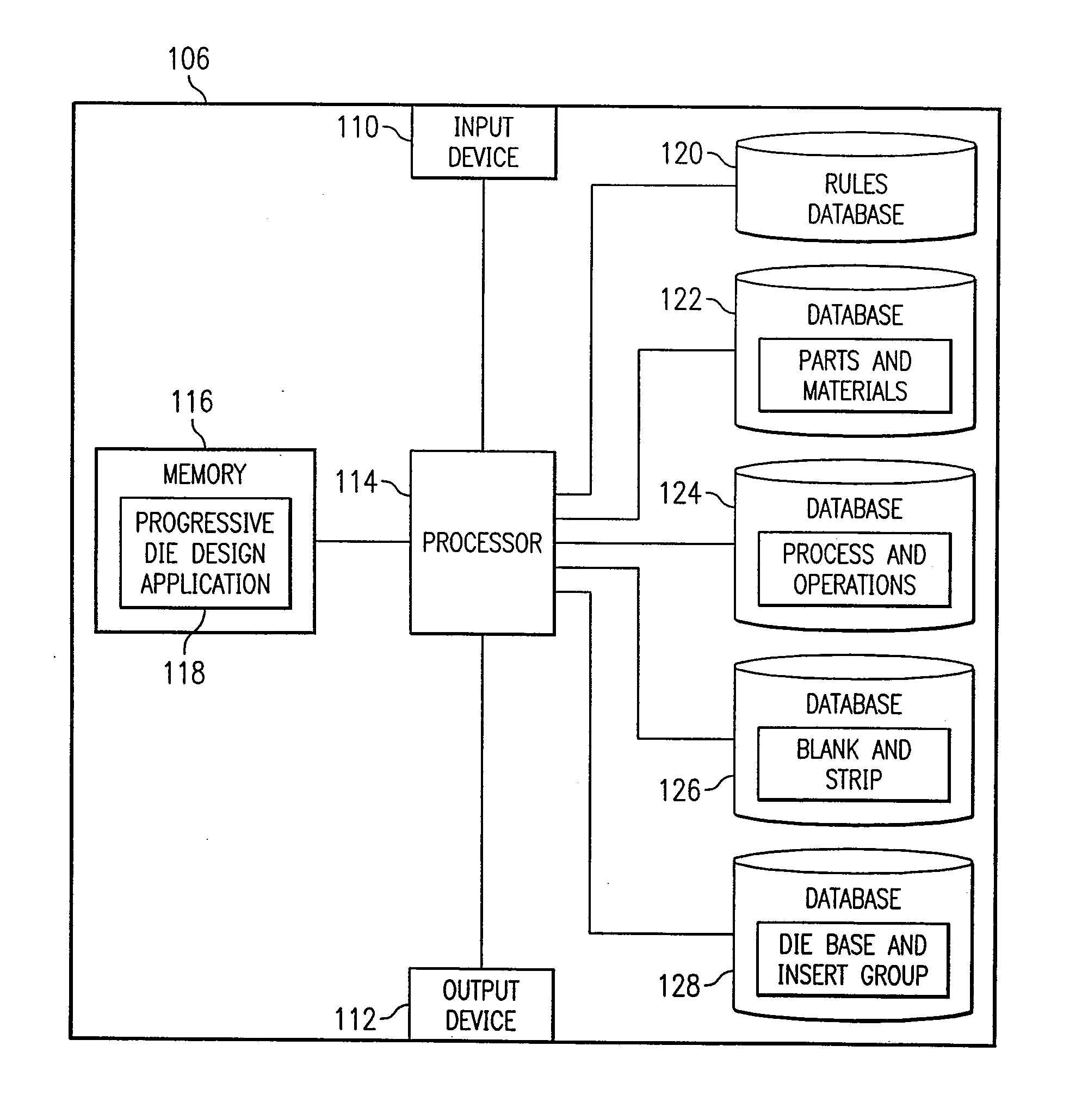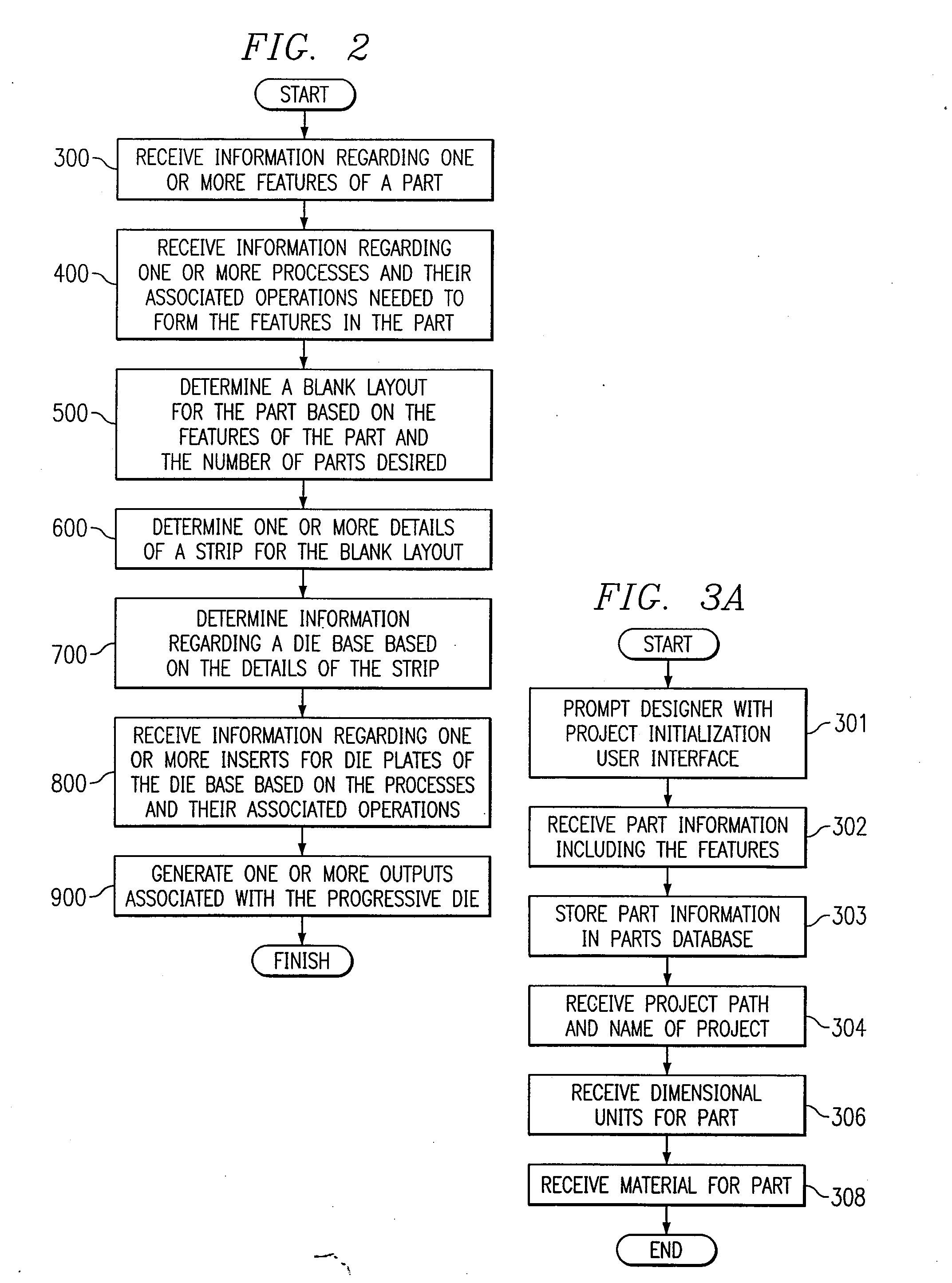Computer-Aided Progressive Die Design System and Method
a technology design system, which is applied in the field of computer-aided progressive die design system and method, can solve the problems of reducing the efficiency of the process, so as to achieve the most efficient work flow, minimize material scrap, and efficiently lay out the features of the process
- Summary
- Abstract
- Description
- Claims
- Application Information
AI Technical Summary
Benefits of technology
Problems solved by technology
Method used
Image
Examples
Embodiment Construction
[0028] Example embodiments of the present invention and their advantages are best understood by referring now to FIGS. 1 through 9 of the drawings, in which like numerals refer to like parts.
[0029]FIG. 1a is a block diagram illustrating a computer-aided progressive die design system 100 according to one embodiment of the present invention. System 100 includes a progressive die design company 102 employing a progressive die designer 104 having access to a computer 200 and a printer 108. Progressive die design company 102 may be any company or other suitable entity that designs progressive dies. Progressive die design company 102 often has a goal of producing high-quality progressive dies within short lead-times. Because progressive die design is a relatively complex and highly iterative process, the present invention provides a computerized method and system for designing progressive dies used in manufacturing parts formed from sheet metal. Some embodiments of the present invention ...
PUM
| Property | Measurement | Unit |
|---|---|---|
| width | aaaaa | aaaaa |
| length | aaaaa | aaaaa |
| press force | aaaaa | aaaaa |
Abstract
Description
Claims
Application Information
 Login to View More
Login to View More - R&D
- Intellectual Property
- Life Sciences
- Materials
- Tech Scout
- Unparalleled Data Quality
- Higher Quality Content
- 60% Fewer Hallucinations
Browse by: Latest US Patents, China's latest patents, Technical Efficacy Thesaurus, Application Domain, Technology Topic, Popular Technical Reports.
© 2025 PatSnap. All rights reserved.Legal|Privacy policy|Modern Slavery Act Transparency Statement|Sitemap|About US| Contact US: help@patsnap.com



